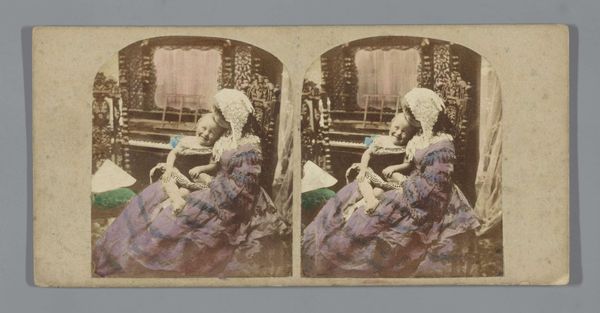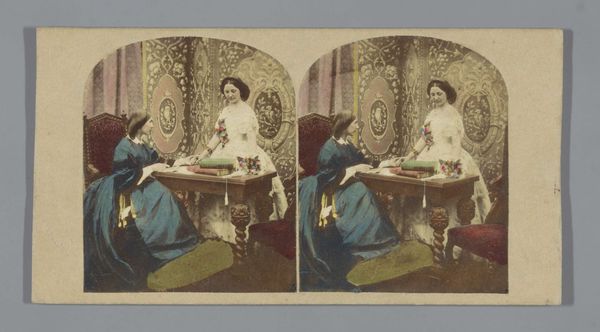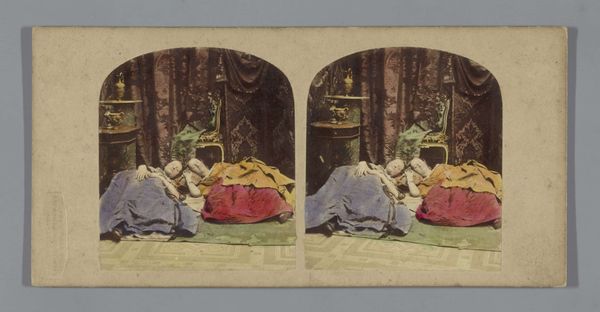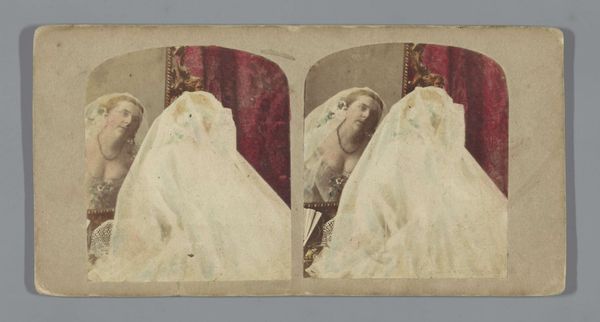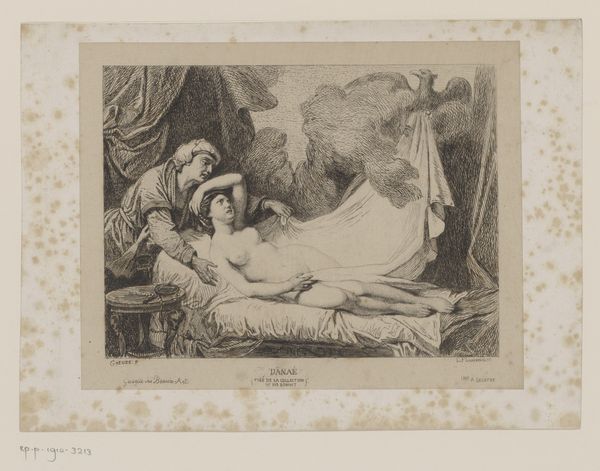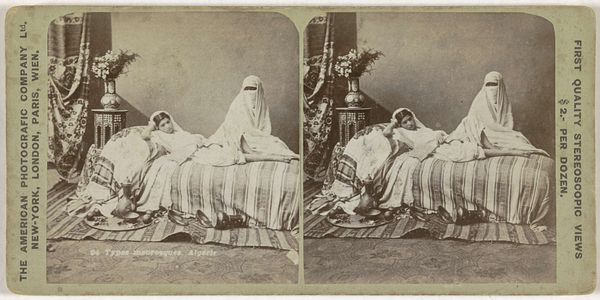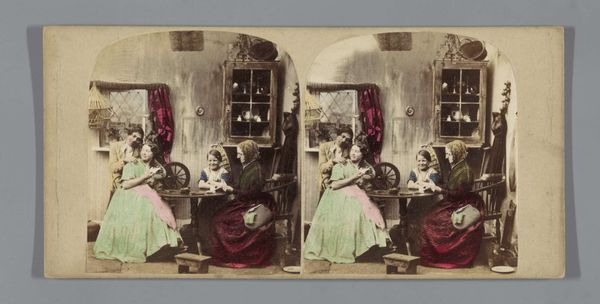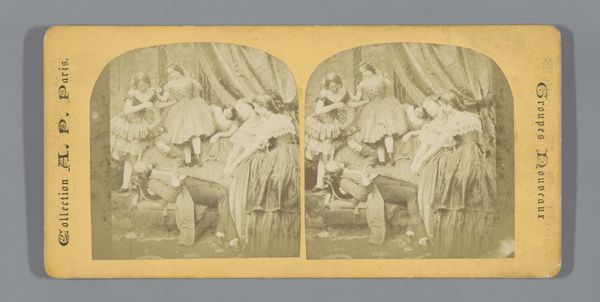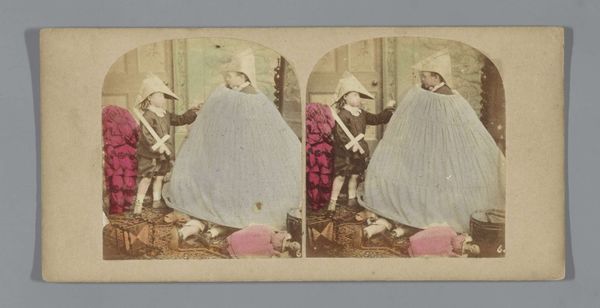
Dimensions: height 85 mm, width 175 mm
Copyright: Rijks Museum: Open Domain
Curator: Let’s explore this image by Alfred Silvester titled, “Father, Mother, and Child on a Bed,” believed to have been created between 1850 and 1864 using photography. It presents itself as quite the domestic tableau. Editor: Immediately, what strikes me is the compression of space. The figures are so close to the picture plane, it's almost claustrophobic. The light, too, is quite directed, focusing our gaze almost exclusively on the family group. Curator: Considering the time period, such deliberate staging could signal multiple layers of societal messaging. We might analyze the role of the father as caregiver versus the mother's pose; her calm and composed stature indicates a woman of domestic tranquility, upholding ideals of femininity during the Victorian era. How does her dress function within this representation? Editor: Ah, an interesting detail. Her gown, with its elaborate horizontal stripes, emphasizes her form, but in a strangely flattening way, adding to the spatial ambiguity I mentioned. It is eye-catching and pulls my focus away from her expression which feels stiff or passive. Note also how the arching of the scene and family dynamic leads directly towards the vanishing point behind the seated woman; there's a strange kind of visual pressure present in that area of the artwork. Curator: I see your point, and it leads me to consider how images like this contribute to the construction and circulation of bourgeois family values. Silvester, perhaps, sought to not merely reflect reality but shape perceptions around familial roles and social status. The presence of colour in early photography would surely contribute to that end, suggesting not simply likeness, but life. Editor: Precisely. The color acts as a signifier, a flag of belonging. But it’s crucial we don’t just passively accept the surface representation. Instead we examine its structure to decode the narrative being constructed—the controlled environment, deliberate poses. Do they, in fact, veil certain socio-political anxieties of the time? What do we truly know of the identity and realities of this family? Curator: Indeed, looking through a contemporary lens invites these questions. We might further interrogate this family portrait, delving deeper into the socio-economic context, reflecting on the power dynamics, and questioning whose narrative this photograph truly serves. Editor: Yes, it reminds me of how vital visual language becomes when social discourse intersects, prompting viewers to scrutinize every shade and compositional decision made, for deeper interpretations.
Comments
No comments
Be the first to comment and join the conversation on the ultimate creative platform.

